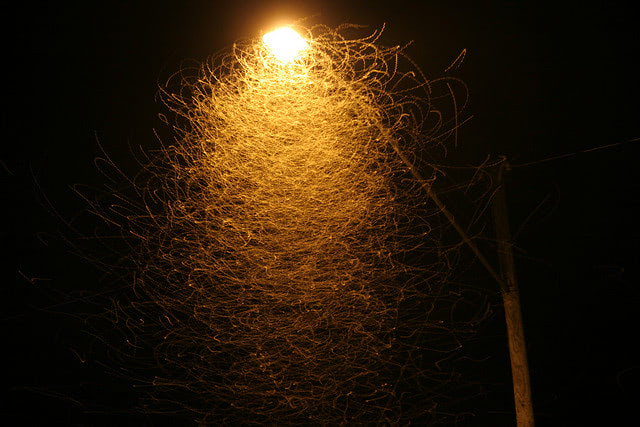The first "modern" streetlight was lit in London's Pall Mall in 1807. That night may also have marked the first time a moth found itself trapped in an irresistible spiral around public lighting. Ever since then, streetlights have become a fixture of life in cities and suburbs, and a deathtrap for flying insects. Researchers at the University of Exeter have recently discovered that the abundance of insect life around these lights is not just a passing assemblage, but a permanent fixture. The diversity of invertebrate ground predators and scavengers, like beetles and harvestmen, remained elevated around streetlights even during the day. These insects had figured out the benefits of living in an island of artificially high prey concentrations.
These findings indicate that streetlights affect local ecologies for a longer duration, and at a higher level in the food web, than previously thought. Given the decline of pollinators and other invertebrates in the UK and around the world, it may be important to re-examine the impact of seemingly harmless nighttime lighting.
Image via Swburdine. Thanks to Twitter user Namhenderson for the story.

Share your thoughts and join the technology debate!
Be the first to comment